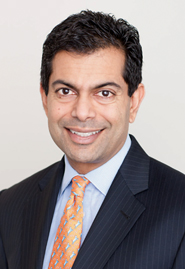Traditionally, high-net-worth individuals and family offices have struggled to invest in private markets, in spite of their high collective AUM. In this article, Myles Milston, Co-Founder and CEO of Globacap gives insight into how technology is opening up access to private markets for private investors and analyses how increasing allocations from these investors will affect the market.
Private markets are experiencing a boom. Allocations are significantly increasing across the board from all types of investors. High-net-worth individuals (HNWIs) and family office investors are no exception to this rule. Diversification into private markets is now a strategic must-have for investors, particularly as the market faces higher levels of volatility.
This is a huge moment for individual investors, who aren’t letting this opportunity escape them – individual investors are set to invest an additional $1 trillion of retail assets into alternatives over the coming five years.
Private investors now oversee a sizable proportion of worldwide AUM, given the substantial growth in private wealth in recent years. The collective private markets assets under management (AUM) of family offices have more than doubled in the last 10 years, and the number of global private wealth owners is set to increase by 28.1% by 2028.
This positions HNWIs as key catalysts for future growth in private markets. But why are private market allocations growing at such an increased rate and how will this affect the real economy? economy?
Private markets pique investors’ attention
Private markets have made huge strides forward in recent years. Over the past decade, they have increased funding, boosted liquidity and embraced automation and technology, making them an attractive alternative to investing in public markets.
While EMEIA IPO activity continues to shrink, private markets are beginning to function more smoothly, quicker, more efficiently, and at a greater scale than before.
Private companies planning to list and those that have already gone public are increasingly finding private markets more attractive. This is because companies can now access the funding and liquidity they need while avoiding the complexity and expense of going public.
For investors, private markets offer a variety of benefits. Not least among them are the higher returns and stability they often provide, doubling as a strong hedge against inflation. Private markets also give investors a chance to invest in the real economy, diversifying away from more traditional stocks and bond investing routes.
Now expected to grow at double the rate of public assets, private markets are predicted to reach an AUM of between $60 trillion and $65 trillion by 2032.
Barriers to investing private markets
Historically, HNWIs and family offices have faced challenges in accessing private assets, and it’s been cost-prohibitive for private markets-focused funds to offer access at scale. Slow transaction times, often taking weeks to process, combined with low liquidity and funding levels have kept investors reluctant to engage with the space.
Specifically, HNWIs and family offices’ small size often acts as a barrier to entry into the market. With typically lower AUM and high minimum investment requirements that are common for private market opportunities such as private equity or venture capital, HNWIs and family offices are often unable to invest.
In addition, regulation also prevents individual investors from entering private markets, as they need to be officially certified as having a high net worth or as sophisticated investors. To be certified, investors must have an income of at least £170,000 and net assets of at least £430,000 over the last financial year, preventing many from participating in the market.
However, strides forward in private markets’ technology have reduced transaction times and opened up accessibility to make private markets an attractive alternative to traditional public markets. Advances in workflow automation software, for instance, are bringing private markets’ efficiency in line with that of public markets.
Additionally, new technology and products, such as digital nominee solutions that offer alternatives to traditional structures such as SPVs and feeder vehicles, have made it feasible for asset managers to take HNWI investment at scale efficiently by pooling smaller ticket investors under a single LP.
As a result, interest from private investors in allocating greater portions of wealth into private markets is on the rise. In fact, new research shows that nearly half (46%) of family offices see an increased focus on private markets as a key area of difference for the next generation’s investments.
Driving the economy with increased participation
Investors of all types are eager for a slice of the lucrative private markets pie, with this becoming one of the more exciting areas of the market in recent years. Private investors’ flexibility means that they are particularly well-positioned to adapt quickly and take advantage of any new opportunities.
Historically, HNWIs and family offices have found it difficult to access the lucrative returns on offer in private markets. However, access is being widened for these investors through new technology such as digital nominee structures, empowering them to become more involved in this area of the investment market.
Growing incoming allocations from private wealth, along with bolstered private markets AUM and more seamless access to investments could provide a significant boost to the economy by unlocking trillions of dollars’ worth of new capital for investment in companies globally.




